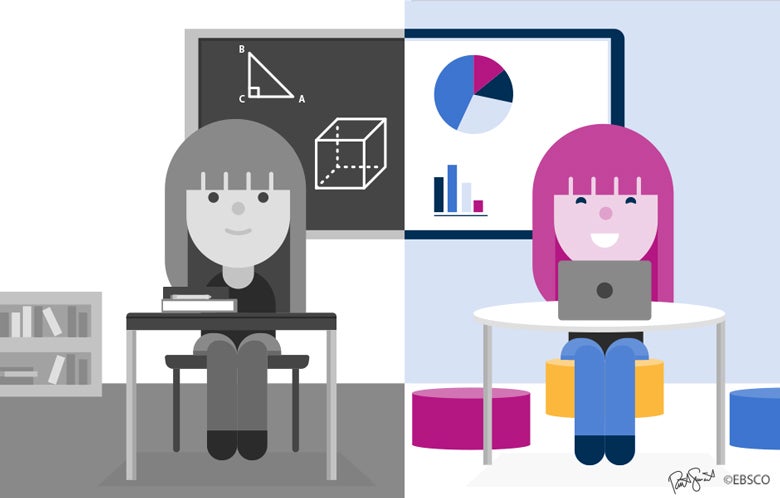In 2013-4, schools purchased more than 23 million devices for classroom use. Gone are the days when learning was solely achieved using pens, paper, books, globes and chalkboards. In today’s world, various forms of technology are routinely found in elementary, middle and high school classrooms, including interactive whiteboards, desktop computers, laptop computers, tablets and smartphones. To accompany this hardware, there are many educational software packages, online databases and mobile applications available to educators that aid in the teaching and learning process.
Proponents of technology in the classroom feel that empowering students with hardware and educational software gives them a sense of ownership. Rather than students being on the receiving end of a teacher’s lectures and being expected to listen, absorb, and take notes, technology allows them to be active participants. In “Technology in the Classroom: It’s Not a Matter of ‘If’ but ‘When’ and ‘How,” an article in Education Digest by Alice Armstrong, she describes the new relationship best as, “…technology is transforming students into explorers and teachers into guides.”
In “Technology in the Classroom: It’s Not a Matter of ‘If’ but ‘When’ and ‘How,” an article in Education Digest by Alice Armstrong, she describes the new relationship best as, “…technology is transforming students into explorers and teachers into guides.”
In “Technology in the Classroom: It’s Not a Matter of ‘If’ but ‘When’ and ‘How,” an article in Education Digest by Alice Armstrong, she describes the new relationship best as, “…technology is transforming students into explorers and teachers into guides.”
Chromebooks Facilitate Personalized Learning in Schools
Many school districts are providing students with their own laptop computers, specifically Google Chromebooks. In 2017, more than half of the mobile devices shipped to classrooms were Chromebooks. Chromebooks are popular as they are an inexpensive alternative for school districts struggling to stay below budget. Allowing students to use the device for the school year and bring it home when needed can facilitate personalized learning. In addition to many proprietary products for teachers and students, Chromebooks are also compatible with Android apps.
Engaging Digital Magazines and E-Content Promote Interactive Teaching and Learning
As educators and librarians know, technology used in the classroom is only as strong as the content provided. The Flipster Android App has been optimized for delivery via the Google Play Store to select Chromebooks, which provides end users with a multitude of options for their devices. This affords school districts that own Chromebooks and subscribe to interactive resources such as e-books, audiobooks and digital magazines with the exciting opportunity to use this powerful combination for interactive teaching and learning.
Flipster offers many digital magazines that aid in classroom learning. Time and Newsweek can be used in discussions about current events, allowing students to read and react to the latest news. Cricket Media’s magazines cover literary, science and historical topics for a wide range of school-age learners. Articles in many digital magazines can be used in reading comprehension exercises; allowing students to pick their magazine of choice makes for a more collaborative experience.
References:
ARMSTRONG, ALICE. "Technology in the Classroom It's Not a Matter of 'If,' but 'When' and 'How'." Education Digest, vol. 79, no. 5, Jan. 2014, pp. 39-46. EBSCOhost, search.ebscohost.com/login.aspx?direct=true&db=eue&AN=93376851&site=ehost-live&scope=site.
